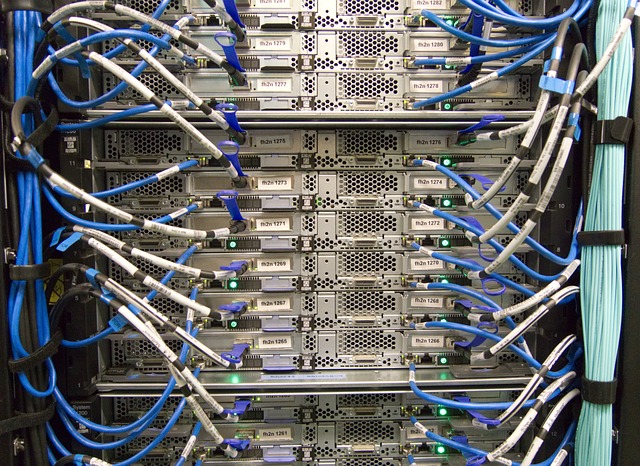As the core component of the stable operation of various systems, the performance of enterprise database directly affects the operation efficiency. From small website data storage to massive information execution on large financial, e-commerce, and cloud computing platforms, enterprise database performance is critical to the stability and response speed of the entire application system. How to ensure the efficient, stable and reliable operation of database system in practical application? This requires a thorough understanding of the performance requirements of the database server, and reasonable planning and optimization based on the actual deployment.
The performance requirements of enterprise database servers are first reflected in the CPU processing power. The performance of enterprise database processor directly affects the query processing speed, transaction execution efficiency and concurrency capability. Most relational databases (such as MySQL, PostgreSQL, SQL Server, and Oracle) use complex computational logic, especially when performing joint table queries, index scans, aggregate functions, sorting, etc., the CPU frequency and number of cores are particularly important. For scenarios that support a large number of concurrent connections, multi-core processors can achieve better task allocation and response speed through multi-threading, while high frequency single-core performance can speed up the processing time of a single request. Therefore, when deploying a database server, choosing a multi-core, multi-threaded, and high-frequency CPU is the first step to improve the overall performance of the database.
This is followed by memory capacity and bandwidth. The operation of enterprise databases is highly dependent on memory performance, not only for buffer pools, cache pages, temporary tables, execution plans, and connection information, but also for reducing the frequency of disk I/O operations. Especially for engines such as InnoDB, if it can provide a large enough Buffer Pool, the data will be loaded into memory as much as possible to achieve "memory level response", greatly improving query performance. Insufficient memory may cause frequent disk reads and writes, resulting in performance bottlenecks. Therefore, configuring sufficient memory resources for the database, even to meet the "in-memory database" standard, is particularly critical for high-concurrency environments. In addition to capacity, memory bandwidth and access speed are also important factors affecting the efficiency of data loading.
Disk performance is also one of the key parameters of the database server. Disks store database files, logs, indexes, backups, and temporary data. In scenarios where disk access is frequent, such as writing-intensive applications (e-commerce order systems, financial systems) or complex report generation scenarios, traditional mechanical hard disks (HDDS) can become a performance bottleneck due to low IOPS (reads/writes per second). The use of SSDS and even enterprise-class NVMe disks can significantly improve data write speed and random read efficiency, and reduce response latency. In addition, RAID configuration helps improve performance and data security. For example, RAID10 combines read/write performance and redundant backup, and is a common high-performance disk array solution in database systems.
In addition, network performance is equally important for database servers deployed in distributed environments. Especially in database master/slave replication, read/write separation and distributed transaction management, network delay and bandwidth limitation may cause data synchronization lag and transaction response delay. The high bandwidth, low latency special line connection or high-speed LAN structure is conducive to efficient communication between database nodes to ensure data consistency and real-time system. In the cloud database architecture, using a private network to Connect database instances, or enabling high-speed channel services (such as AWS Direct Connect, Alibaba Cloud private Channel) are also effective means to ensure performance.
At the software level, operating system and database engine optimization are also important dimensions that affect server performance. Databases frequently invoke system resources during operation. Therefore, select an operating system environment with strong optimization ability and high stability, such as Ubuntu Server, CentOS, and Red Hat Enterprise Linux. At the same time, the tuning of database parameters such as cache size, number of connection pools, transaction isolation level, log refresh strategy, etc., will also have a decisive impact on system performance. For example, the innodb_buffer_pool_size parameter in MySQL is recommended to be set to 60% to 70% of the total memory to maximize caching efficiency. Reasonably enabling query caching, asynchronous commit, and delayed write mechanisms can also significantly optimize performance without sacrificing data integrity.

The scalability and fault-tolerant design of the database cannot be ignored. By supporting horizontal sub-database sub-table, master-slave architecture, distributed cluster deployment, etc., the database has the ability to expand linearly with the growth of services. If the database architecture does not support scaling, performance will inevitably deteriorate as the amount of data increases. In addition, high availability mechanisms, such as active/standby switchover, heartbeat detection, automatic Dr, and active-active deployment, can effectively prevent service interruption caused by hardware faults, power outages, and system crashes, ensuring long-term database stability.
Finally, the performance of the database is also affected over the long term by monitoring and tuning mechanisms. A well-functioning database server must have a comprehensive performance monitoring system that records key metrics such as CPU, memory, disk, connection count, slow queries, and lock waits in real time so that the technical team can identify and resolve potential problems in a timely manner.
The performance requirements of database servers are multi-dimensional and systematic engineering, related to hardware configuration, operating system environment, database engine parameters, network architecture and even system disaster recovery mechanism. It is mainly to create a high-performance and highly available database system, which should be continuously optimized and adjusted according to the actual needs of the business. The database server can be used to support high-concurrency, high-traffic, and high-stability service scenarios.






